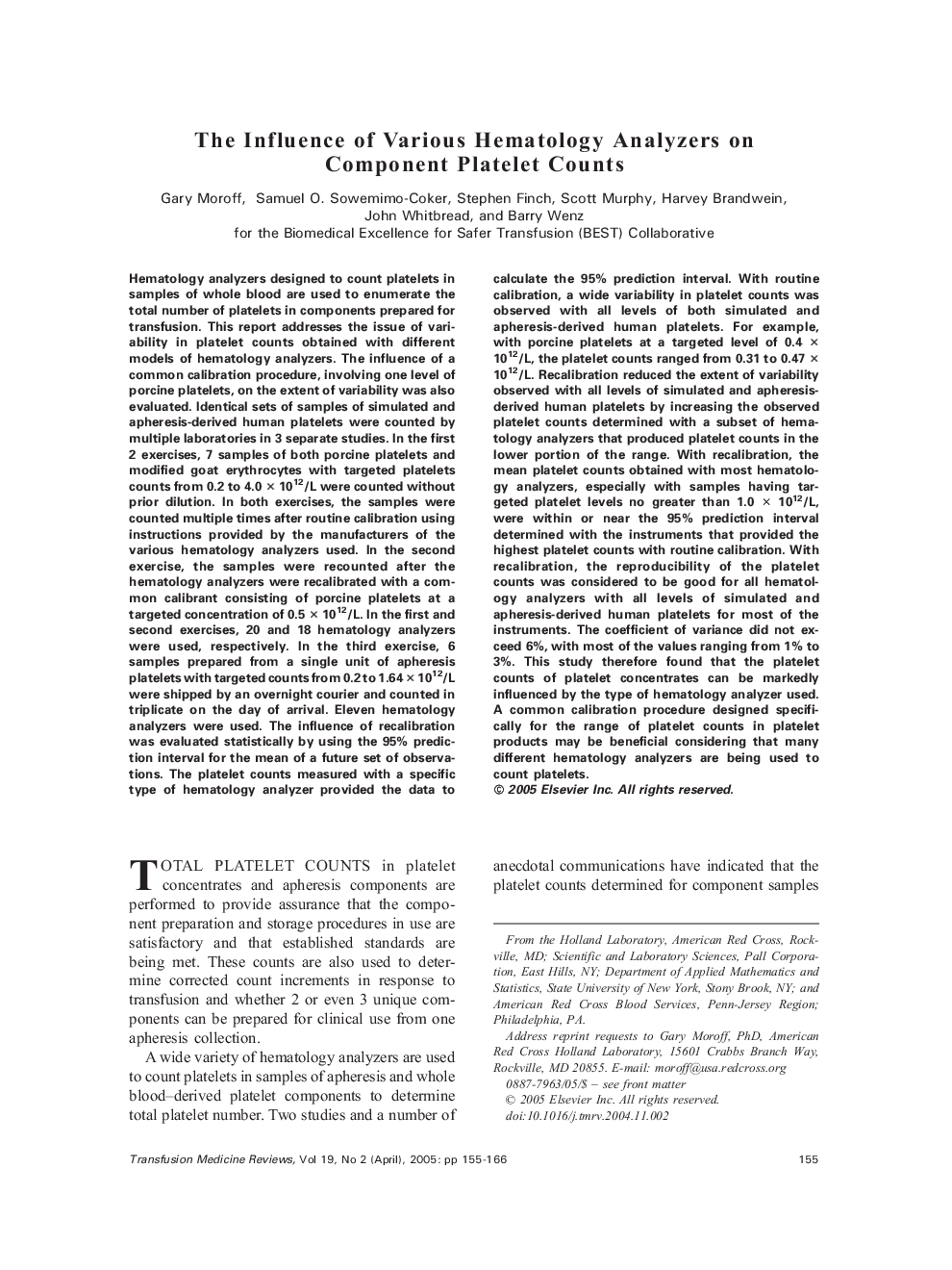| Article ID | Journal | Published Year | Pages | File Type |
|---|---|---|---|---|
| 9259440 | Transfusion Medicine Reviews | 2005 | 12 Pages |
Abstract
Hematology analyzers designed to count platelets in samples of whole blood are used to enumerate the total number of platelets in components prepared for transfusion. This report addresses the issue of variability in platelet counts obtained with different models of hematology analyzers. The influence of a common calibration procedure, involving one level of porcine platelets, on the extent of variability was also evaluated. Identical sets of samples of simulated and apheresis-derived human platelets were counted by multiple laboratories in 3 separate studies. In the first 2 exercises, 7 samples of both porcine platelets and modified goat erythrocytes with targeted platelets counts from 0.2 to 4.0 Ã 1012/L were counted without prior dilution. In both exercises, the samples were counted multiple times after routine calibration using instructions provided by the manufacturers of the various hematology analyzers used. In the second exercise, the samples were recounted after the hematology analyzers were recalibrated with a common calibrant consisting of porcine platelets at a targeted concentration of 0.5 Ã 1012/L. In the first and second exercises, 20 and 18 hematology analyzers were used, respectively. In the third exercise, 6 samples prepared from a single unit of apheresis platelets with targeted counts from 0.2 to 1.64 Ã 1012/L were shipped by an overnight courier and counted in triplicate on the day of arrival. Eleven hematology analyzers were used. The influence of recalibration was evaluated statistically by using the 95% prediction interval for the mean of a future set of observations. The platelet counts measured with a specific type of hematology analyzer provided the data to calculate the 95% prediction interval. With routine calibration, a wide variability in platelet counts was observed with all levels of both simulated and apheresis-derived human platelets. For example, with porcine platelets at a targeted level of 0.4 Ã 1012/L, the platelet counts ranged from 0.31 to 0.47 Ã 1012/L. Recalibration reduced the extent of variability observed with all levels of simulated and apheresis-derived human platelets by increasing the observed platelet counts determined with a subset of hematology analyzers that produced platelet counts in the lower portion of the range. With recalibration, the mean platelet counts obtained with most hematology analyzers, especially with samples having targeted platelet levels no greater than 1.0 Ã 1012/L, were within or near the 95% prediction interval determined with the instruments that provided the highest platelet counts with routine calibration. With recalibration, the reproducibility of the platelet counts was considered to be good for all hematology analyzers with all levels of simulated and apheresis-derived human platelets for most of the instruments. The coefficient of variance did not exceed 6%, with most of the values ranging from 1% to 3%. This study therefore found that the platelet counts of platelet concentrates can be markedly influenced by the type of hematology analyzer used. A common calibration procedure designed specifically for the range of platelet counts in platelet products may be beneficial considering that many different hematology analyzers are being used to count platelets.
Related Topics
Health Sciences
Medicine and Dentistry
Hematology
Authors
Gary Moroff, Samuel O. Sowemimo-Coker, Stephen Finch, Scott Murphy, Harvey Brandwein, John Whitbread, Barry Wenz,
